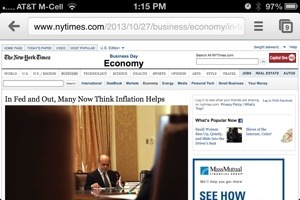Adams, William, Liran Einav, and Jonathan Levin. 2009. “Liquidity Constraints
and Imperfect Information in Subprime Lending.” American Economic
Review 99 (1): 49-84.
Agarwal, Sumit, Paige Marta Skiba, and Jeremy Tobacman. 2009. “Payday
Loans and Credit Cards: New Liquidity and Credit Scoring Puzzles?”
American Economic Review Papers and Proceedings 99 (2): 412-417.
Bhutta, Neil, Paige Marta Skiba, and Jeremy Tobacman. 2012. “Payday Loan
Choices and Consequences.” Vanderbilt University Law School Working
Paper No.12-20.
Chatterjee, Satyajit, Dean Corbae, Makoto Nakajima, and Jose-Victor Rios-
Rull. 2007. “A Quantitative Theory of Unsecured Consumer Credit with
Risk of Default.” Econometrica 75 (6): 173-234.
Edelberg, Wendy. 2004. “Testing for Adverse Selection and Moral Hazard in
Consumer Loan Markets.” FEDS Working Paper No. 2004-09.
Elliehausen, Gregory, and Edward C. Lawrence. 2001. Payday Advance Credit
in America: An Analysis of Customer Demand. Credit Research Center,
Georgetown University.
Gross, David, and Nicholas S. Souleles. 2002. “Do Liquidity Constraints and
Interest Rates Matter for Consumer Behavior? Evidence from the Credit
Card Data.” Quarterly Journal of Economics 117 (1): 149-185.
Karlan, Dean, and Jonathan Zinman. 2009. “Expanding Credit Access: Using
Randomized Supply Decisions to Estimate the Impacts.” Review of Financial
Studies 23 (1): 433-464.
Melzer, Brian T.. 2011. “The Real Costs of Credit Access: Evidence from the
Payday Lending Market.” Quarterly Journal of Economics 126 (1): 517-
555.
Melzer, Brian T., and Donald P. Morgan. 2010. “Competition and Adverse
Selection in a Consumer Loan Market: The Curious Case of Overdraft vs.
Payday Credit.” Unpublished.
Morse, Adair. 2011. “Payday Lenders: Heroes or Villains?” Journal of Financial
Economics 102 (1): 28-44.
Skiba, Paige Marta, and Jeremy Tobacman. 2011. “Do Payday Loans Cause
Bankruptcy?” Vanderbilt University Law and Economics Research Paper
No. 11-13.
Stephens, Melvin. 2008. “The Consumption Response to Predictable Changes
in Discretionary Income: Evidence from the Repayment of Vehicle
Loans.” Review of Economics and Statistics 90 (2): 241-252.


